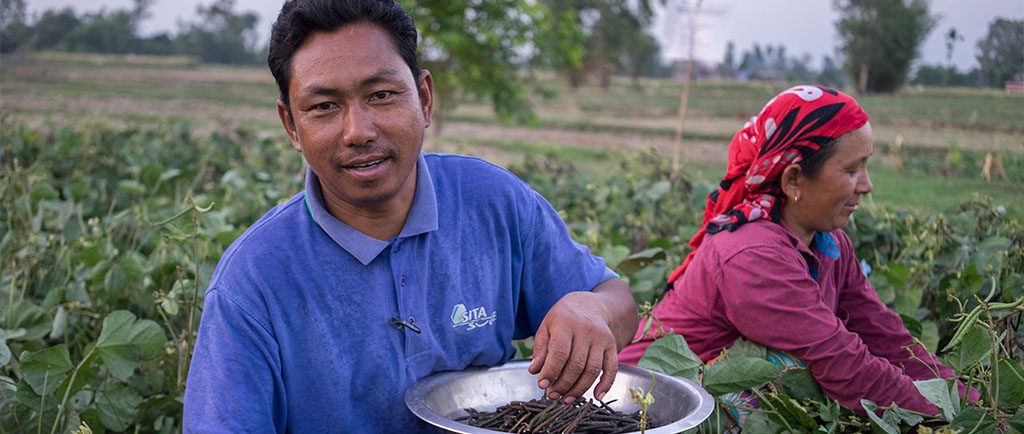Pulse Cultivation Boosts Farm Income in Fallows of Nepal

Low-risk mungbean expands through public-private partnerships.
This year, farmers in Banke, Bardiya, Kailali and Kanchanpur districts of Nepal have successfully cultivated mungbean, which they planted after the wheat harvest and which constitutes a new, third crop in the annual cropping calendar. Without mungbean, the land would be left fallow during this period. Pulse cultivation not only provides extra income but also improves household nutrition and helps farmers enrich their soil fertility.
By acreage, lentil is the most important pulse cultivated in Nepal, but due to disease pressures and the risk of crop failure due to wet winters in heavy soils and dry winters in light soils, many farmers are reluctant to invest resources in these ‘third crops’. Yields for lentil in particular have stagnated at a very low level. However, mungbean, a short-duration legume, provides an attractive pulse alternative that is less risky and an ideal complement to the rice–wheat cropping system because it can be planted soon after the wheat harvest and harvested before the rice season.
Growing mungbean allows farmers to earn additional income without displacing other crops. 2016 is the International Year of Pulses and it’s been highlighted that pulses offer exceptional nutritional benefits – being a good source of protein and vital micronutrients – that can greatly benefit people’s health and livelihoods, particularly in developing countries.
To increase the uptake of mungbean in Nepal, the Cereal Systems Initiative for South Asia (CSISA) initiated collaborations with the National Grain Legume Research Program and District Agriculture Development Offices in 2014 by conducting on-farm evaluations of mungbean performance in different cropping systems. Results showed that mungbean could be successfully produced during the spring season in pockets where irrigation exists. Building on these lessons, CSISA developed a public-private partnership model that linked seed companies and millers with producers and farmers’ groups with government extension.
CSISA also worked across the value chain to assess market requirements (required volume and product characteristics), facilitate contractual arrangements between the seed companies and agricultural cooperatives for seed production, and coordinate grain procurement between millers and farmers’ groups through pre-season planning. Output markets were strengthened so that producers have assured procurement, which has helped accelerate production and projected demand for mungbean in Nepal.
As an example, the private seed company GATE Nepal produced 10 metric tons (MT) of mungbean seed under contractual arrangements with nine agricultural cooperatives during the 2016 spring season, representing a 10-fold increase from 2015. At the farm level, more than 600 newly adopting farmers were involved in mungbean grain production in the Feed the Future zone in 2016, covering more than 100 ha and producing 85 MT of grains (average productivity 800 kg/ha), generating value of more than US$ 127,000. Farmers sold 30 percent of the total grain in the market and saved the rest as seed for the next season or consumed it as a pulse.
Seeing the benefit from mungbean cultivation and increased farmers’ demand, the Crop Development Directorate under the Department of Agriculture has decided to promote this crop through its ongoing “soil fertility enhancement” program across the Terai. As a consequence, GATE Nepal reports that 80 percent of the existing mungbean seed stock has already been booked for the 2017 season, and the company is seeking alternative sources from Indian seed companies to bolster supplies while their own production capacity increases. This suggests that the mungbean area could expand by at least by 1,000 ha in 2017.
To contribute to the further expansion of mungbean in Nepal, CSISA has developed a social marketing video documenting the advantages associated with cultivation. Efforts are underway to conduct community-level video campaigns in favorable areas for expanding mungbean production.
This article is authored by Narayan Prasad Khanal, Research Associate, CIMMYT.
